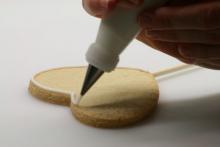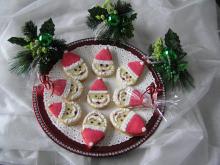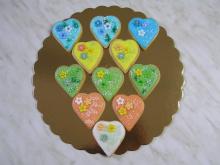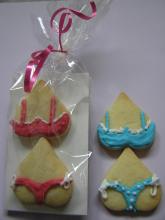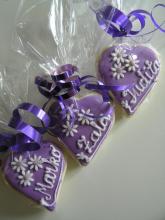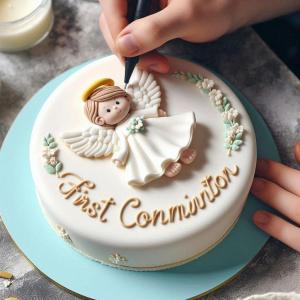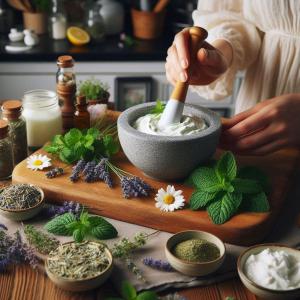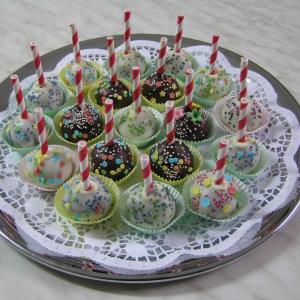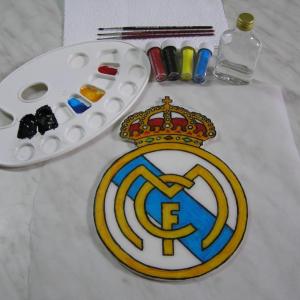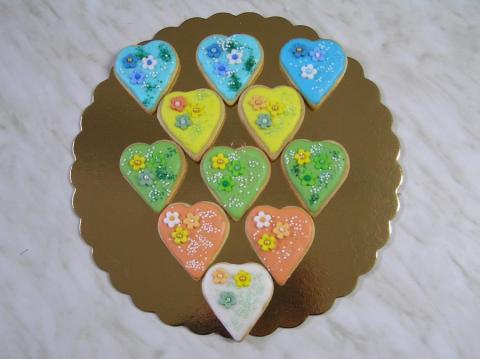
-
Cookies (sugar cookies work well)
-
Royal icing (in desired colors)
-
Piping bags
-
Piping tips (different sizes)
-
Toothpicks or scribe tools
-
Food coloring
-
Small bowls for mixing colors
-
Water
-
Paper towels
-
Cooling racks
-
Bake the Cookies: Make sure your cookies are baked and completely cooled before starting. Sugar cookies are a popular choice because they hold their shape well.
-
Level the Surface: Ensure your cookies have a flat surface for easier decorating.
- Basic Recipe: Mix powdered sugar, meringue powder (or egg whites), and water to the right consistency. The ratio is typically 2 cups of powdered sugar to 2 tablespoons of meringue powder and 3-4 tablespoons of water.
- Mix Until Stiff Peaks Form: Beat the mixture until it forms stiff peaks. This is your base royal icing.
- Color the Icing: Divide the icing into small bowls and add food coloring as desired. Mix well to achieve even coloring.
3. Determine Icing Consistencies
- Stiff Consistency: For outlining and details. Should hold a peak and not spread.
- Flood Consistency: For filling in areas. When you drizzle it back into the bowl, it should smooth out in about 10-15 seconds.
4. Fill Piping Bags
- Use piping bags with couplers and tips to allow for easy changing of tips.
- Fill the bags with the appropriate consistency icing. Use smaller piping tips (like #1 or #2) for fine details and larger tips (like #3 or #4) for flooding.
5. Outline the Cookies
- Using the stiff consistency icing, outline the edge of each cookie. This creates a barrier for the flood icing.
- Allow the outline to set for a few minutes before moving on to flooding.
6. Flood the Cookies
- Using the flood consistency icing, fill in the outlined area. You can use a piping bag or a squeeze bottle for more control.
- Use a toothpick or scribe tool to spread the icing and pop any air bubbles.
-
Let the base layer dry completely before adding more details. This can take several hours or overnight.
-
Use the stiff consistency icing for adding details like lines, dots, and other designs.
-
For layering colors (like wet-on-wet technique), work quickly before the base layer dries.
-
Add any final decorations, such as sprinkles or edible glitter, while the icing is still wet.
-
Let the cookies dry completely before handling or packaging. This ensures the icing sets properly and won’t smudge.
-
Store decorated cookies in an airtight container at room temperature. They can last for about a week.
-
Practice Piping: Practice your piping on parchment paper before decorating the actual cookies.
-
Experiment with Techniques: Try different techniques like marbling, wet-on-wet, or using stencils.
-
Keep Icing Covered: Royal icing dries out quickly, so keep it covered with a damp cloth when not in use.
-
Piping Consistency
-
Flooding Consistency
-
Purpose: This icing is used to outline the cookie and add intricate details. It should be thick enough to hold its shape and not spread out.
-
How to Achieve It: Start with your basic royal icing and gradually add water, a few drops at a time, until the icing is thick but still smooth. It should form stiff peaks when you lift the spoon out of the bowl. If you draw a line with this icing, it should hold its shape and not flatten out.
-
Uses: Outlining cookies, adding borders, creating detailed designs like writing, leaves, or flowers.
-
Purpose: This icing is used to fill the surface of the cookie and cover large areas. It is much thinner than piping consistency and spreads easily.
-
How to Achieve It: Start with your basic royal icing and add water, one teaspoon at a time, until it reaches a more liquid state. The icing should flow smoothly and flatten out within 10-15 seconds after being drizzled back into the bowl.
-
Uses: Flooding the inside area of the outlined cookie, creating a smooth base layer, marbling techniques.
- Cooling: Allow cookies to cool on the baking sheet for 5 minutes, then transfer them to a wire rack to cool completely.
- Setup: Place cooled cookies back on baking sheets for easy handling and, if needed, refrigeration to set the icing.
- Decorating: Use the piping and flooding techniques described above to decorate your cookies.
Letting Cookies Sit Before Icing
- Why Wait?: The warmth from freshly baked cookies can cause royal icing to melt and colored sprinkles to bleed, making it difficult to achieve clean, crisp designs.
- Recommended Wait Time: Let the cookies sit at room temperature for at least 30 minutes, or until they are fully cooled to the touch.
Icing Drying Time
- Thin Layers: Icing dries completely in about 2 hours at room temperature if applied in a thin layer.
- Thicker Layers: If the icing is too thick or too runny, it will take longer to dry. For thicker applications, allow additional drying time to ensure the icing sets properly.
How to Easily Decorate Sugar Cookies
- Outline the Cookie: Use piping consistency icing to create a dam around the edge of the cookie. Pipe around the shape in one unbroken line.
- Flood the Cookie: Use flooding consistency icing to fill in the outlined area. Work quickly to spread the icing evenly.
- Fill in the Gaps: Use a toothpick or scribe tool to spread the icing into any gaps and pop any air bubbles.
- Add Decorations: While the icing is still wet, add colorful sugars, candies, nuts, or other decorations. Let your creativity shine!
Tips for Success
- Practice Piping: Practice on parchment paper before decorating actual cookies to get a feel for the right pressure and movement.
- Experiment with Techniques: Try different techniques like marbling, wet-on-wet designs, or using stencils.
- Keep Icing Covered: Royal icing dries quickly, so keep it covered with a damp cloth when not in use to prevent it from hardening.
By following these detailed steps and tips, you’ll be able to create beautifully decorated cookies with royal icing that are perfect for any occasion. Enjoy the process and let your creativity flourish!
